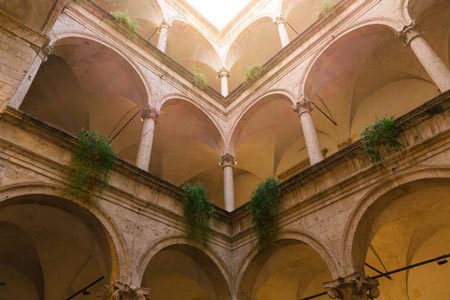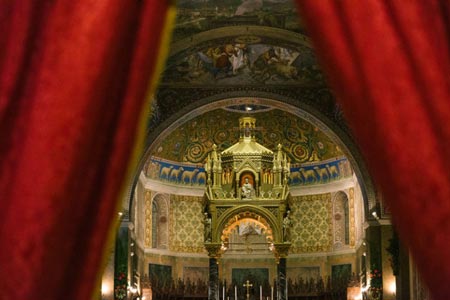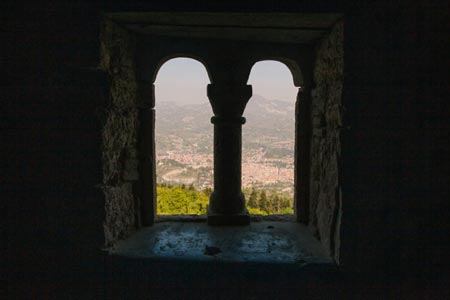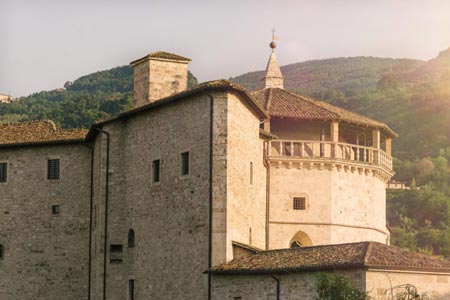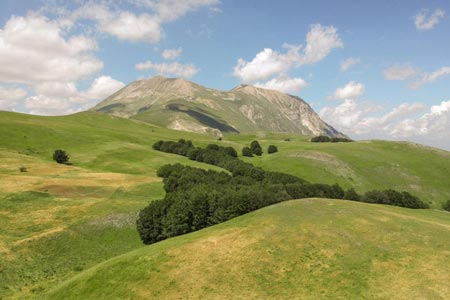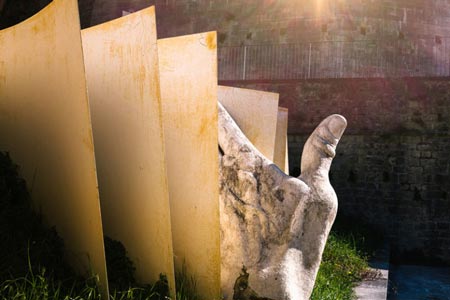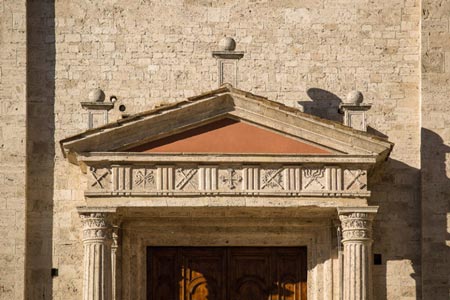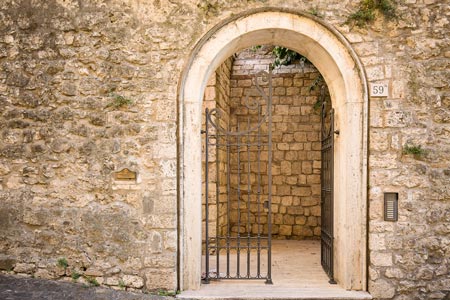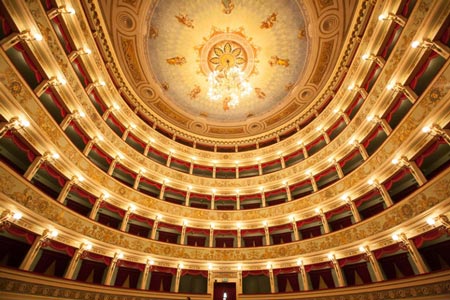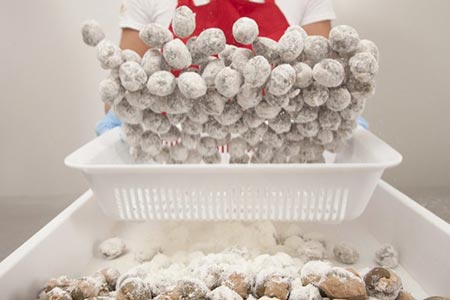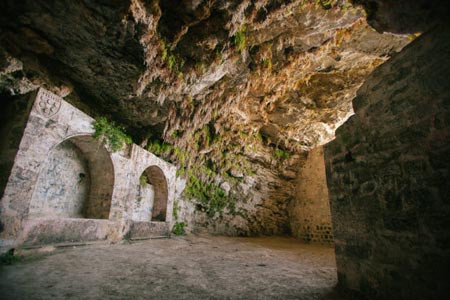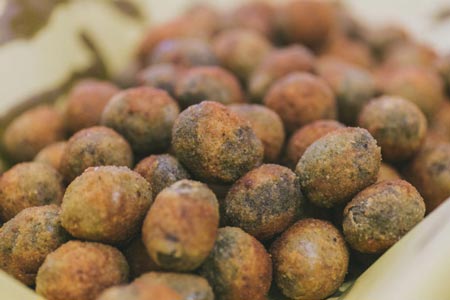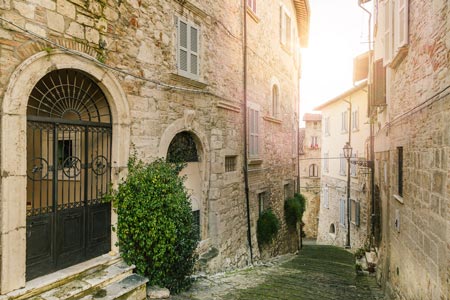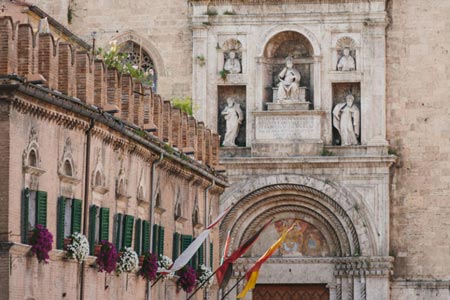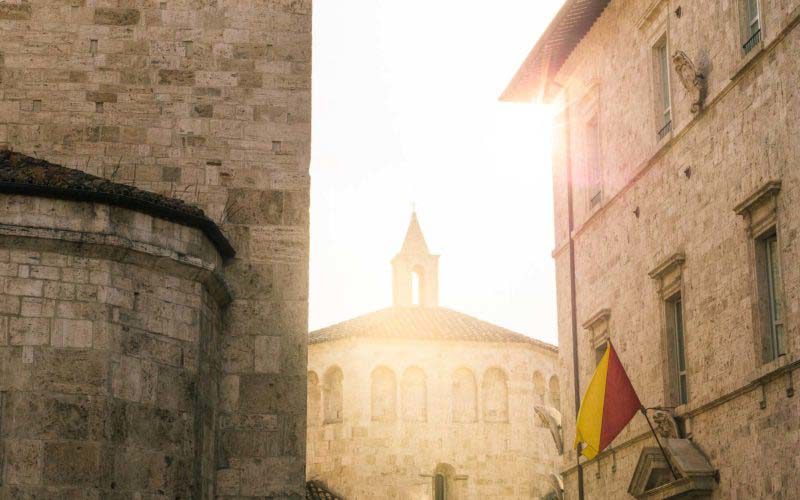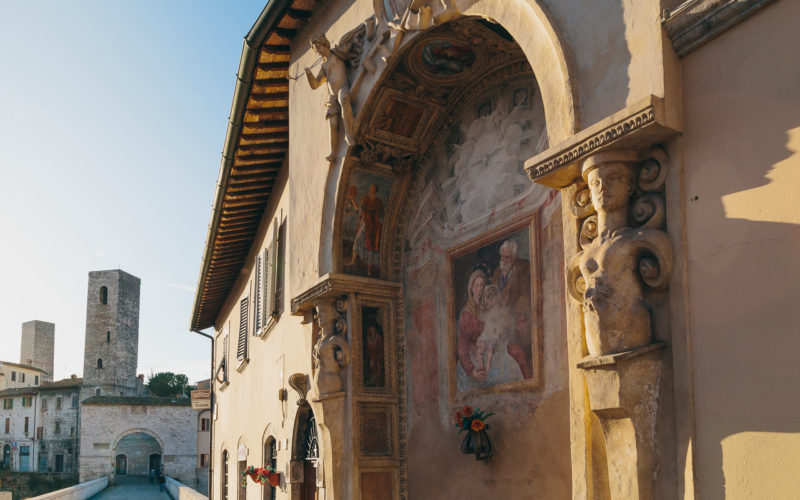Must-see monumental churches in Ascoli Piceno: San Pietro Martire
The Church of San Pietro Martire is one of the most impressive in the city. If you want to experience a holiday in the history of the Art City of Piceno, don’t miss it! San Pietro Martire stands on the remains of a smaller church dedicated to San Domenico, once a property of the powerful Dominican order. It was founded by Fra Pietro da Verona who introduced this monastic order to Ascoli in 1250. The construction began in 1280, almost twenty years after the Church of Saint Francis foundation. The work seemed faster since we know that the church sides were already there in 1332, and a travertine stone with an inscription translated from Latin says: “The Year 1332 on the celebration of St. Peter Martyr at the time of Pope John XXII“. After a fire destroyed the previous Romanesque church around 1255-57, new construction started. Rather than to San Domenico, the church was dedicated to Pietro da Verona, who had recently suffered martyrdom and had been declared a saint (his body is now preserved in the Basilica of Sant’Eustorgio in Milan).
The main facade is very simple and faces west. On it, a 17th century portal with a Tuscan cymatium by Giuseppe Giosafatti. The side portal (1523) overlooking Piazza Ventidio Basso is much more impressive. The portal by Cola Dell’Amatrice shows the symbols of the Passion of Jesus, and the bell tower is the result of the transformation of the highest remaining noble tower (36 meters). The interior, with a basilica floor plan, is divided into three large naves by eight circular pillars.
The great work of the sixteenth century hides the original trussed ceiling with new brick vaults. Only in the presbytery remain visible the Gothic traits with which the church was born: the ribs and the trefoil windows. The high altar is surrounded by a sixteenth-century wooden choir, while on the sides, there are the tombs of two great Ascoli families, Tibaldeschis and Saladinis. The Tabernacle is imposing and made of carved and gilded wood. Its shape resembles a two-order church, with a dome, niches, and statues. Commissioned in 1619 by Countess Aurelia Guiderocchi for the Ascoli temple of Saint Francis, in 1853 it was purchased and placed in the Chapel of the Blessed Sacrament in the Cathedral, but from 1966 it has been permanently placed here. On the walls of the apses and some pillars, there are still traces of the 15th-century frescoes.
The bright side naves are marked by eight splendid Baroque altars: on them, works by Ludovico Trasi, Antonio di Silvio Giosafatti, Giuseppe Angelini, Buonocore di Campli, and Tommaso Nardini. The first on the left of the apse, in gilded wood, is the work of the carver S. Vincenzo da Napoli. It frames the altarpiece “The miracle of the image of St. Dominic” (1655?) By L. Trasi, which refers to what happened in 1530 to Soriano Calabro: St. Catherine of Alexandria, St. Mary Magdalene, and Mary appeared to Fra Lorenzo and gave him a painting of S. Domenico to be exhibited to the public.
But the most sumptuous altar is undoubtedly the first starting from the apse in the right nave, made between 1720-24 by Giuseppe and Lazzaro Giosafatti. It has six Corinthian marble columns, divided into two groups, almost an open curtain to frame the altarpiece “Madonna del Rosario” by Trasi. On the sides, two statues of white Carrara marble: “La Purità” by Giuseppe Giosafatti and “L’Umiltà” by his son Lazzaro.
On the left of this wonderful altar, there is the entrance to the sacristy: in addition to the wooden furniture consisting of large armoires, there is the “Reliquiario Della Santa Spina” by Vincenzo da Napoli and Francesco Nardoni. Made of gilded silver and enriched with enamels and friezes, it contains a precious relic: one of the thorns belonged to the crown of Jesus’s passion. Its first owner was the King of France Philip the Fair, who donated it to the Dominicans of Ascoli. In reality, it was a real barter. The “Santa Spina” arrived in the Dominican convent of Ascoli in 1290, thanks to Francesco di Sarlis, the king’s confessor, in exchange for a relic of St. Dominic, in the possession of the friars, perhaps a saint’s tooth.
A 16th-century parchment, a copy of an older one kept inside the case of the reliquary (a walnut Ark), tells the story of this event.
CONDIVIDI I TUOI SCATTI CON GLI HASHTAG: #visitascoli #ascolipiceno2024
AUTHOR: Lella Palumbi, expert in art history
